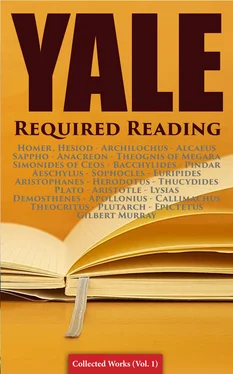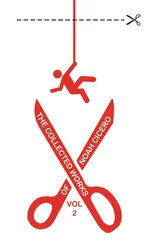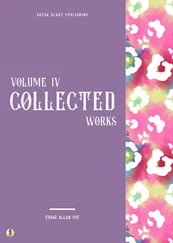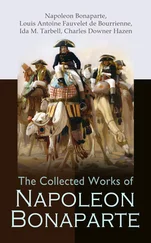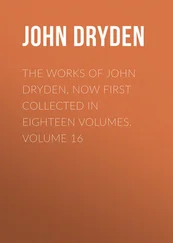Table of Contents
Sing, fair-glancing Muses, of the sons of Zeus, the Tyndaridæ, glorious children of fair-ankled Leda, Castor the tamer of steeds and faultless Polydeuces. These, after wedlock with Cronion of the dark clouds, she bore beneath the crests of Taygetus, that mighty hill, to be the saviours of earthly men, and of swift ships when the wintry breezes rush along the pitiless sea. Then men from their ships call in prayer with sacrifice of white lambs when they mount the vessel’s deck. But the strong wind and the wave of the sea drive down their ship beneath the water; when suddenly appear the sons of Zeus rushing through the air with tawny wings, and straightway have they stilled the tempests of evil winds, and have lulled the waves in the gulfs of the white salt sea: glad signs are they to mariners, an ending of their labour: and men see it and are glad, and cease from weary toil. Hail ye, Tyndaridæ, ye knights of swift steeds, anon will I be mindful of you and of another lay.
Table of Contents
Some say that Semele bare thee to Zeus the lord of thunder in Dracanon, and some in windy Icarus, and some in Naxos, thou seed of Zeus, Eiraphiotes; and others by the deep-swelling river Alpheius, and others, O Prince, say that thou wert born in Thebes. Falsely speak they all: for the Father of Gods and men begat thee far away from men, while white-armed Hera knew it not. There is a hill called Nysê, a lofty hill, flowering into woodland, far away from Phœnicia, near the streams of Ægyptus. . . .
“And to thee will they raise many statues in the temples: as these thy deeds are three, so men will sacrifice to thee hecatombs every three years.” 254
So spake Zeus the counsellor, and nodded with his head. Be gracious, Eiraphiotes, thou wild lover, from thee, beginning and ending with thee, we minstrels sing: in nowise is it possible for him who forgets thee to be mindful of sacred song. Hail to thee, Dionysus Eiraphiotes, with thy mother Semele, whom men call Thyone.
4Baumeister, p. 94, and note on Hymn to Hermes, 51, citing Antigonus Carystius. See, too, Gemoll, Die Homerischen Hymnen , p. 105.
13 Journal of Hellenic Society , vol. xiv. pp. 1-29. Mr. Verrall’s whole paper ought to be read, as a summary cannot be adequate.
16aHenderson, “The Casket Letters,” p. 67.
16bBaumeister, “Hymni Homerici,” 1860, p. 108 et seq .
18 Die Homerischen Hymnen , p. 116 (1886).
23a Journal Anthrop. Inst ., Feb. 1892, p. 290.
23b( Op. cit ., p. 296.) See “Are Savage Gods Borrowed from Missionaries?” ( Nineteenth Century , January 1899).
24Hartland, “Folk-Lore,” ix. 4, 312; x. I, p. 51.
30Winslow, 1622.
34For authorities, see Mr Howitt in the Journal of the Anthropological Institute , and my “Making of Religion.” Also Folk Lore , December-March, 1898-99.
37aManning, “Notes on the Aborigines of New Holland.” Read before Royal Society of New South Wales, 1882. Notes taken down in 1845. Compare Mrs. Langloh Parker, More Australian Legendary Tales , “The Legend of the Flowers.”
37bSpencer and Gillen, “Natives of Central Australia,” p. 651, s.v .
39For the use of Hermes’s tortoise-shell as a musical instrument without strings , in early Anahuac, see Prof. Morse, in Appleton’s Popular Science Monthly , March 1899.
41Gemoll.
44“Golden Bough,” i. 279. Mannhardt, Antike-Wald-und Feldkulte , p. 274.
45Howitt, Journal Anthtop. Inst ., xvi. p. 54.
46aThe Kurnai hold this belief.
46bBrough Smyth, vol. i. p. 426
46c Journal Anthrop. Inst ., xvi. pp. 330-331.
59The most minute study of Lobeck’s Aglaophamus can tell us no more than this; the curious may consult a useful short manual, Eleusis, Ses Mystères, Ses Ruines, et son Musée , by M. Demetrios Philios. Athens, 1896. M. Philios is the Director of the Eleusinian Excavations.
61“Golden Bough,” ii. 292.
62“Golden Bough,” ii. 369.
64a“Golden Bough,” ii. 44.
64bIbid., 46.
65Mrs. Langloh Parker, “More Australian Legends,” pp. 93-99.
66The anthropomorphic view of the Genius of the grain as a woman existed in Peru, as I have remarked in “Myth, Ritual, and Religion,” i. 213. See, too, “Golden Bough,” i. p. 351; Mr. Frazer also notes the Corn Mother of Germany, and the Harvest Maiden of Balquhidder.
67“Golden Bough,” p. 351, citing from Mannhardt a Spanish tract of 1649.
68Howitt, on Mysteries of the Coast Murring ( Journal Anthrop. Instit ., vol. xiv.).
69De Smet, “Oregon Mission,” p. 359. Tanner’s “Narrative” (1830), pp. 192-193.
72Pater, “Greek Studies,” p. 90.
74a“Africana,” i. 130.
74b Journal Anthrop. Instit . (1884), xiii. pp. 444, 450.
74c Op. cit ., xiv. pp. 310, 316.
75“New South Wales,” by Barren Field, pp. 69, 122 (1825).
76aAristophanes, Ranæ , 445 et seq .; Origen. c. Cels ., iii. 59; Andocides, Myst ., 31; Euripides, Bacch , 72 et seq . See Wobbermin, Religionsgeschitliche Studien , pp. 36-44.
76bWobbermin, op. cit ., p. 38.
77Wobbermin, op. cit ., p. 34.
78Hatch, “Hibbert Lectures,” pp. 284, 285.
82 Recherches sur l’Origine et la Nature des Mystères d’Eleusis . Klinikseck. Paris, 1895.
84Herodotus, ii. 171.
85aSpencer and Gillen, “Natives of Central Australia,” p. 399. The myth is not very quotable.
85bFoucart, p. 19, quoting Philosophoumena , v. 7. M. Foucart, of course, did not know the Arunta parallel.
85c Journal Anthrop. Inst . (1884), pp. 194, 195, “Ngarego and Wolgal Tribes of New South Wales.”
85dIbid. (1885), p. 313.
86aFor ample information on this head see Mr. Clodd’s “Tom-Tit-Tot,” and my “Custom and Myth” (“Cupid, Psyche, and the Sun Frog”).
86b Panegyr ., 28.
87aClem. Alex. Protrept ., ii. 77 et seq .
87bHarpocration, s. v . Δυσαυλης.
87c Cf. ανασυρτολις . Hippon, 90, and Theophrastus, Charact. 6, and Synesius, 213, c. Liddell and Scott, s.v . ανασυρω.
88a“Sand and Spinifex,” 1899.
88bFoucart, pp. 45, 46
88cHymn, Orph., 41, 5-9.
89aHeriot, 1586.
89bFoucart, pp. 56-59.
90Foucart, p. 64.
91aBasil Thomson, “The Kalou-Vu” ( Journal Anthrop. Inst ., May 1895, pp. 349-356). Mr. Thomson was struck by the Greek analogies, but he did not know, or does not allude to, Plutarch and the Golden Scroll.
91bFragments, V. p. 9, Didot; Foucart, p. 56, note.
95aHerodotus, Alilat, i. 131, iii. 8.
95b“Cities and Bishoprics of Phrygia,” 1895, vol. i. pp. 91, 92.
104Callim., H. Apoll. 30.
ουδ' ο χορος τον φοιβον εφ' εν μονον ημαρ αεισει
εστι yαρ ευυμνις τις αν ου ρεα φοιβον αειδοι;
115The Greek is corrupt, especially in line 213.
121This action was practised by the Zulus in divination, and, curiously, by a Highlander of the last century, appealing to the dead Lovat not to see him wronged.
124A folk-etymology from πυθειν = to rot.
127A similar portent is of recent belief in Maori tradition.
133See Essay on this Hymn.
136In our illustration both the lyre with a tortoise shell for sounding-board, and the cithara, with no such sounding-board, are represented. Is it possible that “the tuneful shell” was primarily used without chords, as an instrument for drumming upon? The drum, variously made, is the primitive musical instrument, and it is doubted whether any stringed instrument existed among native American races. But drawings in ancient Aztec MSS. (as Mr. Morse has recently observed) show the musician using a kind of drum made of a tortoise-shell, and some students have (probably with too much fancy) recognised a figure with a tortoise-shell fitted with chords, in Aztec MSS. It is possible enough that the early Greeks used the shell as a sort of drum, before some inventor (Hermes, in the Hymn) added chords and developed a stringed instrument. Cf . p. 39.
Читать дальше
